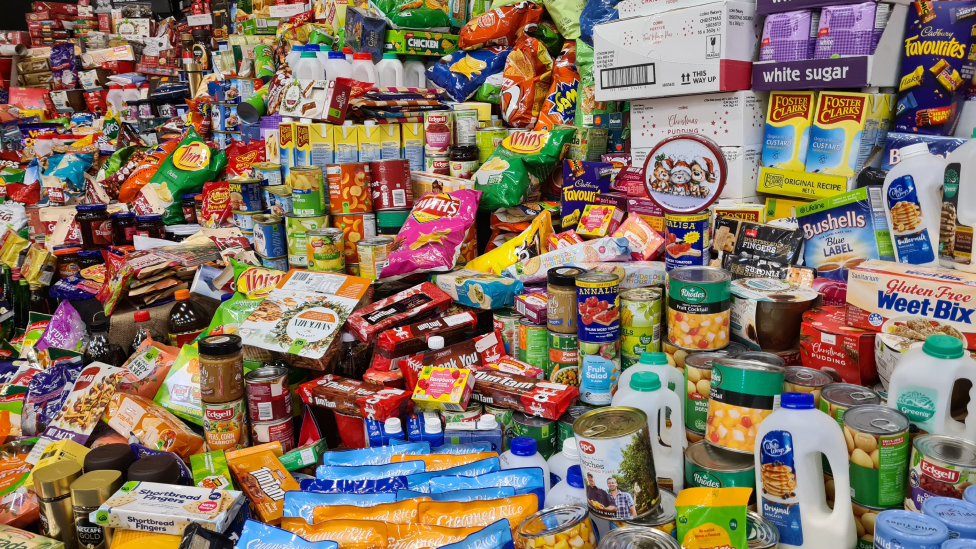Disasters, whether natural or man-made, can have devastating effects on communities, leaving them in urgent need of assistance. Canned food plays a vital role in disaster relief efforts, providing immediate nourishment to affected populations.

This article explores the significance of canned food in disaster relief and highlights its benefits, challenges, and best practices for effective distribution and utilization during times of crisis.
1. Immediate Nourishment:
During the aftermath of a disaster, access to fresh food may be limited or non-existent. Canned food offers a quick and reliable source of nutrition, ensuring that affected individuals have access to sustenance without the need for refrigeration, cooking, or additional resources.
2. Long Shelf Life:
One of the key advantages of canned food in disaster relief is its extended shelf life. Canned goods can remain safe for consumption for an extended period, often ranging from one to five years or more. This longevity allows relief organizations to stockpile and distribute canned food over an extended period, ensuring sustained nourishment for affected communities.
3. Nutritional Value:
Canned food retains its nutritional value, providing essential vitamins, minerals, and macronutrients required for survival and recovery. Fruits and vegetables are typically canned at their peak freshness, preserving their nutritional content. Additionally, canned proteins such as fish, beans, and meats offer valuable sources of energy and nutrients.
4. Convenience and Portability:
Canned food is highly convenient and portable, making it an ideal choice for disaster relief operations. It requires minimal preparation, as the contents are pre-cooked and ready-to-eat. The compact and lightweight nature of canned goods facilitates easy transportation and distribution to affected areas, even in challenging conditions.
5. Considerations for Disaster Relief:
While canned food is a valuable resource in disaster relief efforts, certain considerations should be taken into account:
a. Dietary Restrictions and Allergies: Relief organizations must consider dietary restrictions and allergies prevalent within affected communities to ensure the provision of suitable canned food options.
b. Cultural Sensitivity: Respect cultural preferences and dietary practices when selecting and distributing canned food, ensuring it aligns with the community's food habits and preferences.
c. Local Cuisine and Preferences: Whenever possible, incorporate locally sourced canned food options that are familiar to the affected population, promoting a sense of comfort and familiarity during times of distress.
d. Storage and Distribution: Adequate storage facilities and distribution channels must be established to ensure the safekeeping and efficient delivery of canned food to affected communities.
6. Collaborative Efforts:
Effective disaster relief requires collaboration between government agencies, non-profit organizations, and local communities. Partnerships with food banks, relief organizations, and manufacturers can help ensure a steady supply of canned food for disaster-affected areas. Coordination among these stakeholders is essential to avoid duplication of efforts and ensure efficient distribution.
7. Best Practices in Canned Food Distribution:
To maximize the impact of canned food in disaster relief, the following best practices should be observed:
a. Needs Assessment: Conduct a thorough needs assessment to determine the quantity and types of canned food required for the affected population, considering factors such as demographics, cultural preferences, and nutritional requirements.
b. Proper Storage and Handling: Ensure proper storage conditions for canned food to maintain product quality and prevent spoilage. Follow food safety protocols during transportation, storage, and distribution.
c. Community Involvement: Engage local communities in the distribution process, seeking their input and involvement to ensure culturally appropriate and effective relief efforts.
d. Education and Empowerment: Provide educational materials and resources on the nutritional value, safe handling, and utilization of canned food to empower individuals and communities to make the most of the available resources.
e. Long-Term Planning: Disaster relief efforts should also focus on long-term recovery and rebuilding. Consider integrating sustainable agriculture initiatives and community gardens to promote self-sufficiency and resilience in the aftermath of a disaster.
Conclusion:
Canned food serves as a vital resource in disaster relief efforts, providing immediate nourishment to affected communities. Its long shelf life, nutritional value, convenience, and portability make it an invaluable asset during times of crisis. By considering the benefits, challenges, and best practices outlined in this article, relief organizations can effectively utilize canned food to address the immediate nutritional needs of disaster-affected populations. Canned food not only sustains individuals during the immediate aftermath of a disaster but also contributes to their long-term recovery and resilience.



采访刊发中国罐头⾏业-01.jpg)

